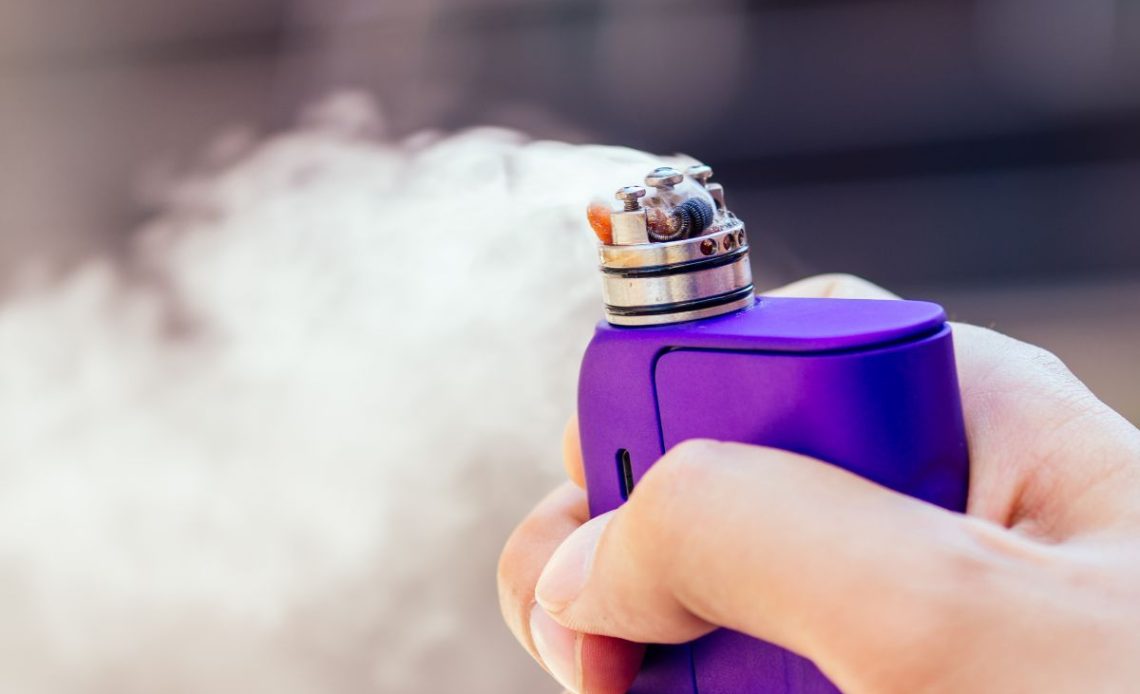Vaping, a term derived from the word “vapor,” refers to the act of inhaling and exhaling aerosol produced by an electronic cigarette or similar device. These devices, often called e-cigarettes or vapes, have gained immense popularity in recent years as an alternative to traditional tobacco smoking.
As the trend of vaping continues to sweep across nations, it is crucial to delve beyond its surface appeal and examine the potential concerns associated with this rapidly growing phenomenon. While touted by some as a safer alternative to smoking, vaping has raised numerous apprehensions among experts and health professionals.
In this discussion, we will explore five major concerns surrounding vaping, shedding light on the potential health risks, addiction, unknown ingredients, the alarming youth vaping epidemic, and the impact of secondhand vaping. Let’s get started.

5 Major Concerns About Vaping
Health Risks
Vaping, often marketed as a safer alternative to traditional smoking, is not without its health risks. Research indicates that e-cigarette aerosol may contain harmful substances such as nicotine, volatile organic compounds, heavy metals, and ultrafine particles that can be inhaled deep into the lungs. These substances have the potential to cause various health issues, including respiratory problems, cardiovascular complications, and adverse effects on lung function.
One of the primary concerns surrounding vaping is the lack of comprehensive, long-term studies on its effects. As a relatively new phenomenon, vaping has not been extensively studied over extended periods. Consequently, the long-term health implications remain uncertain. Without a clear understanding of the potential risks associated with prolonged vaping, vapers may unknowingly expose themselves to health hazards.
In recent years, alarming cases of severe lung injuries associated with vaping have emerged. These cases, often referred to as vaping-associated lung injuries or VALI, have been reported worldwide. While the exact cause is still under investigation, it is believed that certain additives, contaminants, or substances present in vaping products may contribute to these lung injuries. The emergence of such cases highlights the urgent need for further research and regulation to protect public health.
Nicotine Addiction
Nicotine, a highly addictive substance, is a prevalent component of most vaping products. When inhaled through vaping, nicotine rapidly enters the bloodstream and stimulates the release of dopamine in the brain, leading to pleasurable sensations. Over time, this pleasurable response can develop into an addiction, making it challenging for anyone to quit vaping or overcome nicotine dependence.
Vaping devices often contain high levels of nicotine, sometimes exceeding those found in traditional cigarettes. This high nicotine content poses a significant concern as it increases the risk of addiction, especially among non-smokers who have never been exposed to nicotine before. The accessibility and wide range of flavoured vape pods or e-liquids further contribute to the appeal and potential addiction to nicotine.
Vaping, with its high nicotine content and addictive nature, poses a substantial risk of nicotine dependence. Particularly among young people, who are more susceptible to peer influence and experimentation, vaping can serve as a gateway to tobacco smoking and escalate into long-term nicotine addiction. The potential long-term consequences of nicotine dependence highlight the importance of addressing this concern and implementing effective preventive measures.

Unknown Ingredients
E-liquids and vape pods used in vaping devices consist of various ingredients, including propylene glycol, vegetable glycerin, flavourings, and additives. However, there is a lack of transparency regarding the specific ingredients used in many vaping products. Manufacturers are not required to disclose all the components, making it difficult for consumers to assess the potential risks associated with these unknown substances.
Unlike traditional tobacco products, the vaping industry operates in a less regulated environment. This lack of comprehensive regulation and standardisation raises concerns about the quality and safety of vaping products. Without proper oversight, there is a risk of substandard or counterfeit products entering the market, potentially containing harmful ingredients or contaminants that pose additional health risks.
The use of unknown and untested ingredients in vaping products raises serious health concerns. Consumers are often unaware of the potential risks associated with inhaling these substances into their lungs. Adverse reactions, allergic responses, or even toxic effects may result from the presence of undisclosed or poorly studied ingredients. The absence of comprehensive regulation exacerbates these concerns, emphasising the need for stricter control and standardised testing of vaping products.
Youth Vaping Epidemic
The rise in youth vaping has reached epidemic proportions, with an alarming increase in vaping rates among adolescents and teenagers. This trend has raised concerns among parents, educators, and public health officials. Studies have shown that young people are more susceptible to the addictive nature of nicotine and the potential long-term consequences of vaping on their health and well-being.
The vaping industry has come under scrutiny for its marketing practices, which often target young people. Brightly coloured packaging, appealing flavours, and enticing advertisements have contributed to the appeal of vaping among adolescents. This strategic marketing, coupled with the misconception that vaping is harmless, has resulted in a substantial increase in youth experimentation and subsequent addiction.
The long-term consequences of youth vaping remain a significant concern. Studies suggest that early exposure to nicotine through vaping may lead to a higher risk of transitioning to combustible tobacco products in the future. Additionally, the effects of vaping on brain development, cognition, and respiratory health in young ones are still not fully understood. Addressing the youth vaping epidemic is crucial to safeguarding the health and well-being of the younger generation.
Secondhand Vaping
Secondhand vaping refers to the inhalation of exhaled aerosol by others in the proximity of someone who is actively vaping. Although often perceived as harmless water vapor, e-cigarette aerosol contains potentially harmful substances. Non-vapers who are exposed to secondhand vaping may inhale nicotine, particulate matter, volatile organic compounds, and other chemicals, posing risks to their health.

Non-vapers, including family members, friends, and bystanders, can be inadvertently exposed to the chemicals present in e-cigarette aerosol. Studies have found that secondhand vaping can lead to elevated levels of nicotine and other potentially harmful substances in indoor environments. Prolonged exposure to these chemicals may have adverse effects on respiratory health and overall well-being, especially for individuals with pre-existing conditions.
The risks associated with secondhand vaping highlight the importance of implementing policies to protect non-vapers from involuntary exposure. Smoke-free laws and regulations that cover e-cigarette use in public spaces can help reduce the potential harm caused by secondhand vaping.
Final Thought
Addressing these concerns requires a multidimensional approach. More research is needed to understand the long-term health effects of vaping, as well as the specific risks associated with different vaping products and ingredients. Regulation and standardisation within the vaping industry are crucial to ensure product safety and transparency. Comprehensive education and awareness campaigns are necessary to inform the public, especially young people, about the risks and consequences of vaping.
Safeguarding public health and well-being necessitates addressing the major concerns surrounding vaping. We need to take proactive measures to understand and mitigate the health risks, addiction potential, and regulatory gaps associated with vaping, so we can look out for our society extensively, especially the vulnerable, from the potential harms of this rapidly evolving practice. Only through comprehensive research, responsible regulation, and widespread education can we make informed decisions and ensure the well-being of us and our communities.




